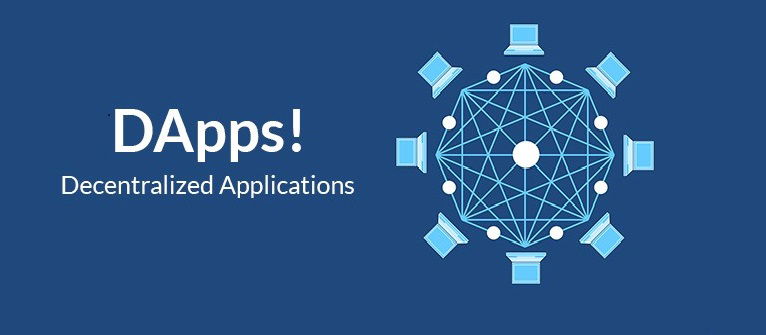What are DApps or Decentralized Applications

DApps or decentralized finance applications are a special category of applications that work on the basis of a decentralized network of computers or computers. The data generated by this application is hosted on a computer network that allows this information to be kept secure and accessible.
This decentralized network is a DLT generally based on blockchain technology.
To give an easier example, we could imagine a DApp as an application known as Facebook, Tinder or Robinhood but instead of running on a central server (there are usually several) it runs on a network made up of thousands of nodes or computers.
Advantages of DApps over a centralized application
1# Security
The main advantage is the security of the application. The fact that this application is running on a network made up of thousands of nodes gives it the security that even if one or more nodes of the network on which it works goes down, it can continue to work.
This does not happen in the case of a centralized application that is running on a central server, since if this is attacked, it will affect the continuity of the service and the application will stop working.
2# They are decentralized
Although we have already commented on it repeatedly, decentralization is a great advantage of DApps. Especially for those applications that have to have a high level of fault tolerance.
In addition, this is a competitive advantage that increases over time, because the larger the network on which said DApp is supported, the more computers (or nodes) there will be in the system and the more complicated it will be for it to crash or collapse. .
3# They are based on free software
Finally, one of the great pillars or benefits of DApps is that their construction has been developed around free software. This allows a large community of developers to exist behind it to provide service and support to the network, as well as allowing a high level of transparency and security to be achieved.
Differences between a decentralized application and a traditional application
To understand what differentiates a decentralized finance application from a traditional application, we have to analyze their differences at 2 fundamental levels, the backend and data storage:
Differences in the backend
The backend refers to the "logic" of the application that makes it work. In the case of traditional applications, all this logic is centralized in a central computer or server.
However, in DApps, the backend is related to a Smart contract that runs on a Blockchain like Ethereum. This gives it another series of advantages such as being based on Smart Contract, and being these public smart contracts, a high level of transparency and security is guaranteed.
Differences in data storage
The next element where we see differences between a traditional app and a decentralized app is data storage. In traditional centralized applications the data is usually stored in a computer or central computer. This means that an attack on that central computer or server can cause the total loss of user information.
This does not happen in decentralized applications in which the data is stored in the computer network or blockchain. This ensures that user data is never lost.